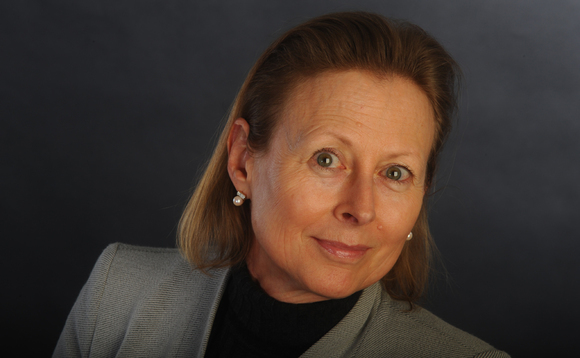
Pricing secondaries: complex process or pure guesswork?

As the secondary market continues to blossom, pricing is finally starting to stabilise, but how do secondary investors approach pricing and should vendors accept discounts as standard? Alice Murray reports
At an event held by Cass Business School this week, Marleen Groen, principal founder and CEO of Greenpark Capital, delivered a keynote speech detailing the processes involved in pricing a secondary deal.
With secondary transaction volumes hitting the $25bn mark in 2012, LPs and GPs alike are increasingly supportive of the relatively nascent industry. Both are aware of the solution it provides for liquidity concerns and of its ability to harmonise the asset class with the changing landscape of institutional investors.
However, pricing volatility has been a cause of concern for vendors over the past decade, with pre-crisis secondary deals averaging premiums of 10% above NAVs, and then dropping to discounts as low as 50% in 2009. Fortunately, a level of stability is working its way into the market, with secondary deals averaging NAV discounts of between 15-20% over the last year. But, with such a huge amount of variation seen in the past decade, how do secondaries players approach pricing?
According to Groen, there are multiple factors that influence the pricing decision. As expected, a growing number of intermediaries have sprung up alongside the burgeoning secondary industry. "Overall, intermediaries are good for the secondary market, as most vendors expect to sell at a premium to the book price. Intermediaries can manage this expectation," said Groen.
The way in which the deal is structured also has a large influence on the final price of a secondary transaction. For example, if a vendor is optimistic towards a fund's performance, or if perhaps a strong exit is expected to complete in the near future, then the LP will naturally want to sell at a premium. "We have to base the price on what happens," said Groen. "In the same manner as listed equities, an anti-embarrassment clause can be worked in if the expected realisation is achieved."
Groen outlines how Greenpark initially approaches a transaction. First, an analysis of the fund is undertaken focusing on the key financials of existing portfolio companies using the GP's quarterly report to LPs. The analysis looks at each investment date, investment cost, book value, the percentage it makes up of the overall portfolio and cash call-downs.
The next step is to establish exit dates and the potential value of those divestments. Here, the secondary house produces three possible outcomes; low, medium and high. "We have to ensure that even in the worst case scenario [the low outcome], there is still money to be made," Groen explained.
Of course, one of the main purposes of secondary investments is to offer LPs a way out before the fund has expired. Therefore, a large proportion of secondary deals will involve positions where the fund still has capital to invest. As Groen said: "Depending on how invested the fund is, we then need to predict expectations on future call-downs and make assumptions on what that capital will do."
Guessing game
Up to this point, the pricing process has been rooted more or less in factual evidence by looking at existing investments. Groen revealed that when it comes to working out future investments and how they will play out, a lot of guesswork is involved: "Secondaries therefore prefer to buy stakes in fully invested funds."
Another major price influencer is fees. "Outstanding fees also need to be factored into the price, and these will be higher if the fund has further investments to make. This can have a big impact on returns," said Groen.
On top of existing and future investments, fees and cash call-downs, there are plenty of other factors that will impact the price. The vendor's situation must be taken into account – if the LP is desperate for liquidity, this will sway the negotiation. The profile of the GP will also influence the price, and for those with good track records and established reputations, secondary deals are likely to attract multiple buyers, therefore creating a competitive element to the deal.
Clearly then, Greenpark has developed a sophisticated approach to pricing secondary deals, albeit with some unavoidable postulation as part of the overall process. And the pricing decision will be looked at by numerous eyes, from analysts to investment committees, all of which will contribute multiple revisions until a widely accepted price level is agreed.
Pricing is the most fundamental aspect to successful secondary investing. The flexibility around pricing can allow for multiple outcomes and offer a level of protection against poorly performing portfolio companies and unexpected occurrences in the market. But however seasoned the approach to pricing has become over the years, there will always be a level of conjecture, or as Groen put it: "We use a complex set of data, which combines to create a gut feeling around the price level."
Latest News
Stonehage Fleming raises USD 130m for largest fund to date, eyes 2024 programme
Sponsor acquired the public software group in July 2017 via the same-year vintage Partners Group Global Value 2017
Stonehage Fleming raises USD 130m for largest fund to date, eyes 2024 programme
Czech Republic-headquartered family office is targeting DACH and CEE region deals
Stonehage Fleming raises USD 130m for largest fund to date, eyes 2024 programme
Ex-Rocket Internet leader Bettina Curtze joins Swiss VC firm as partner and CFO
Stonehage Fleming raises USD 130m for largest fund to date, eyes 2024 programme
Estonia-registered VC could bolster LP base with fresh capital from funds-of-funds or pension funds









